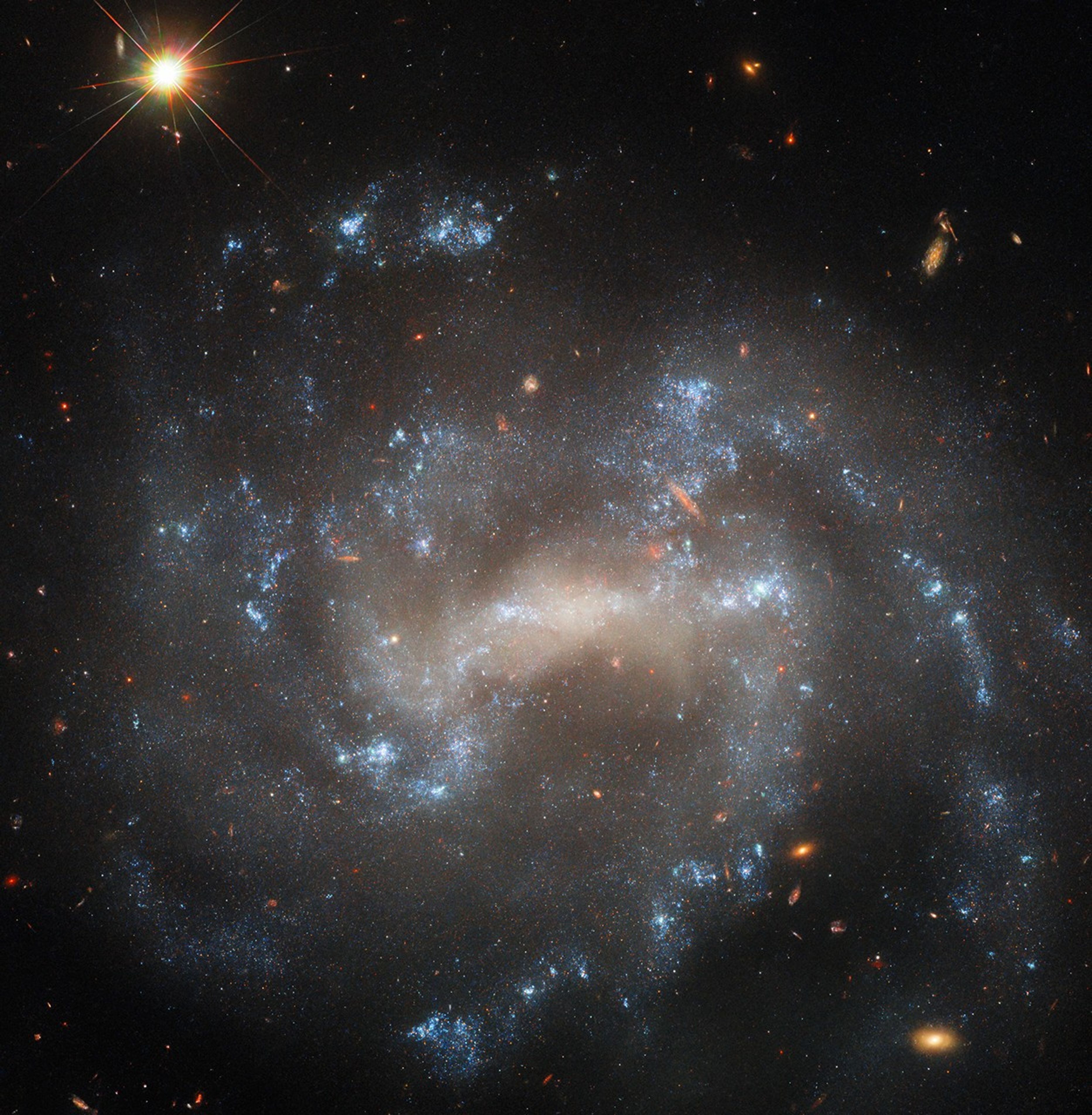2 min read
The sparkling spiral galaxy gracing this NASA/ESA Hubble Space Telescope image is UGC 5460, which sits about 60 million light-years away in the constellation Ursa Major. This image combines four different wavelengths of light to reveal UGC 5460’s central bar of stars, winding spiral arms, and bright blue star clusters. Also captured in the upper left-hand corner is a far closer object: a star just 577 light-years away in our own galaxy.
UGC 5460 has hosted two recent supernovae: SN 2011ht and SN 2015as. It’s because of these two stellar explosions that Hubble targeted this galaxy, collecting data for three observing programs that aim to study various kinds of supernovae.
SN 2015as was as a core-collapse supernova: a cataclysmic explosion that happens when the core of a star far more massive than the Sun runs out of fuel and collapses under its own gravity, initiating a rebound of material outside the core. Hubble observations of SN 2015as will help researchers understand what happens when the expanding shockwave of a supernova collides with the gas that surrounds the exploded star.
SN 2011ht might have been a core-collapse supernova as well, but it could also be an impostor called a luminous blue variable. Luminous blue variables are rare stars that experience eruptions so large that they can mimic supernovae. Crucially, luminous blue variables emerge from these eruptions unscathed, while stars that go supernova do not. Hubble will search for a stellar survivor at SN 2011ht’s location with the goal of revealing the explosion’s origin.
Facebook logo @NASAHubble @NASAHubble Instagram logo @NASAHubbleExplore More
The Death Throes of Stars Homing in on Cosmic ExplosionsMedia Contact:
Claire Andreoli ([email protected])NASA’s Goddard Space Flight Center, Greenbelt, MD
Share
Details
Last Updated Feb 21, 2025 Editor Andrea Gianopoulos Location NASA Goddard Space Flight CenterRelated Terms
Hubble Space Telescope Astrophysics Astrophysics Division Galaxies Goddard Space Flight Center Spiral Galaxies Stars Supernovae Keep ExploringDiscover More Topics From NASA
Hubble Space Telescope
Since its 1990 launch, the Hubble Space Telescope has changed our fundamental understanding of the universe.
Hubble’s Night Sky Challenge
Hubble’s Galaxies
Reshaping Our Cosmic View: Hubble Science Highlights
Read More Details
Finally We wish PressBee provided you with enough information of ( Hubble Spies a Spiral That May Be Hiding an Imposter )
Also on site :
- Watch Live: American Cardinal Robert Provost chosen as new pope
- Former Pomona police officers acquitted in brutality case settle lawsuit against city for $2.5 million
- White smoke appears over Sistine Chapel as Conclave elects new Pope

